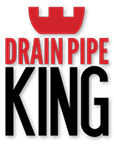Types of pipes
Pipe purposes
Pipes have many functions to carry out and are located in many different areas of your home. Some are designated to carry water in and others to transfer waste water out. The ‘inbound’ pipes carrying uncontaminated water into the house are called water pipes. The channels which are responsible for moving water waste out of the house are known as sewerage and storm water pipes.
The plumbing will vary from one house to the next, depending on when the house was built. Most houses built prior to 1980 will have big, heavy clay pipes to carry sewage and stormwater waste away. Houses built post 1980 will generally have smaller PVC pipes. These days, copper or plastic pipes are used for inbound pipes as opposed to galvanized steel which was used prior to this.
Clay / earthenware pipes
Properties:
- Very old / aged
- Thick and brittle
- Heavy
- Can still be purchased but they are not used for residential sewerage pipes anymore
- Joined in small sections between 600mm and 900mm
- Joined with rubber joints; these are not as strong as glued joints as seen with PVC pipes and will deteriorate over time
Uses:
- Commercial sewerage pipes
Advantages:
- Can cope with heat better than PVC so are useful for commercial kitchens. By law commercial dishwashers must run at 80 degrees.
PVC pipes
Properties:
- White
- Flexible
- Long 6 metre lengths are available as they are lightweight. Therefore lengths of pipes will have less joints
- Joints can be glued together
- Does not deal with heat as well as clay pipes; it may bend, buckle, bow or become deformed if it gets hot
Uses:
- Sewerage and storm water pipes
Advantages:
- PVC pipe joints that are glued together are a lot stronger than traditional rubber joints as seen in clay pipe joints. This means tree roots find it more difficult to get in
- Larger lengths also mean less joints, decreasing the chances of tree roots entering the pipe and causing damage.
Copper pipes
Properties:
- Expensive
- Not as common in newer buildings
- Higher chance of corrosion than PVC from soil, urine and minerals in the water supply
- Handles heat better than PVC
- Can be used for drainage pipes although it would need to be wrapped in the ground due to corrosion, unless elevated under a building
- Heavy
- Slow to assemble as it requires welding to be joined
Uses:
- Water, gas and commercial elevated drainage
Advantages:
Good to use inside walls or where it needs to be hung (under buildings or for elevated pipe work).
